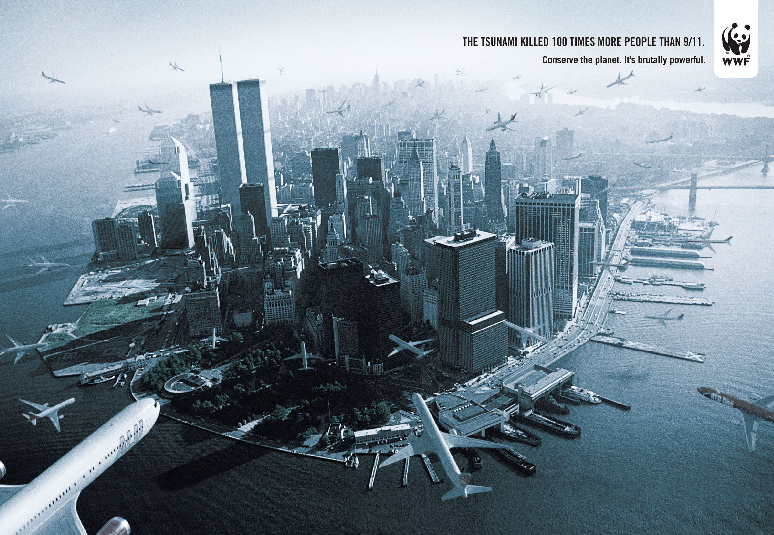Asia at D&AD: Is it the tough anti-scam stance or GFC that accounts for dramatic drop in entries?
Despite a tougher stance on scam advertising and the lingering effects of the GFC, total entries to D&AD in 2010 were only down by 3.6 per cent on 2009. This follows last year’s 20 per cent drop in entries, after a record 25,000 pieces of work were entered in 2008, the show’s best year yet.
However, in south-east Asia there was a significant drop-off in entries with Singapore down 33 per cent on 2010 entry levels, Malaysia down 45 per cent, Thailand 39 per cent down, China 46 per cent down and Hong Kong down by 22 per cent on 2009 entry levels.
Entries from Australia were up 33 per cent on 2009 after dropping by 19 per cent last year. New Zealand saw a 10 per cent increase on 2009 levels after a 35 per cent drop in entries in 2009 compared to 2008.
A spokesperson for D&AD, Maeve O’Sullivan, says entries from thesecountries have been in decline for a while: “We assume it’s related tothe drop in traditional advertising entries,” she says.
Entries in the traditional advertising categories were down by 7.5 percent in 2010, the continuation of a trend that has emerged over thepast few years along with an upswing in digital and design.
Digital entries were up 18 per cent in 2010, design was up 5 per cent,and post and production entries were up 17 per cent on 2009.
Asked what impact D&AD’s tougher stance on scam advertising had onentries, O’Sullivan says that overall entries haven’t dropped in anysignificant way and it should be noted that D&AD didn’t lose anyentrants this year: “If anything, our entry numbers should be seen as endorsement of our stance by the industry,” she says.
 The crackdown followed New York-based The One Show’s announcement lastSeptember that it would ban agencies and individual members of creativeteams found guilty of submitting scam ads for up to five years after a‘Tsunami’ print ad (left) for WWF in Brazil turned out to be a scam and wasstripped of its the award. (CB’s repeated requests to The One Club for details ontheir entry figures for 2010 were not responded to at the time ofposting.) However, it would be safe to assume – from CB Asia’s own enquiries – that south-east Asian entries to The One Show are down significantly.
The crackdown followed New York-based The One Show’s announcement lastSeptember that it would ban agencies and individual members of creativeteams found guilty of submitting scam ads for up to five years after a‘Tsunami’ print ad (left) for WWF in Brazil turned out to be a scam and wasstripped of its the award. (CB’s repeated requests to The One Club for details ontheir entry figures for 2010 were not responded to at the time ofposting.) However, it would be safe to assume – from CB Asia’s own enquiries – that south-east Asian entries to The One Show are down significantly.
Soon afterwards, D&AD clarified its scam policy, saying jurors wereinstructed to be vigilant in identifying work where they had concernsabout its validity. Suspect work would be investigated by the awardsteam and referred to the executive committee, if necessary, with theaward show maintaining the right to exclude any fraudulent entries,along with the entering agency, from that and subsequent D&ADawards shows.
Furthermore, from this year onwards, the ECD or an equivalent officerof the entrant company must validate the eligibility of the every itementered for D&AD, ensuring that work does not slip throughoutwithout their knowledge.
Of the 68 countries entering work for this year’s D&AD, 30 per cent of theentries come from the UK, followed by the US (18 per cent) and Germany(6 per cent). Australia represents the fourth biggest entry market with5 per cent of entries followed by Brazil and Japan with 3.7 per cent ofentries each.
Figures from the rest of Asia show D&AD entries from Japan were up1 per cent in 2010 after a 14 per cent increase in 2009 on 2008 andIndia was also up 1 per cent after a drop of 22 percent in 2009 on2008. Entries from the Philippines were up 104 per cent in 2010 after a48 per cent drop in 2009 on 2008 entry levels; South Korea was up 12per cent in 2010 after a 40 per cent decrease in 2009 on 2008 entrylevels and Taiwan was up 37 per cent after a 46 per cent decrease in2009 on 2008 entry levels.

4 Comments
Hmm, just saw this and surprised no-one’s jumped on, as the stats do raise an obvious and potentially damning point: that, faced with being outed as scammers and shamed on global blogs a la the WWF debacle, almost half of Asian agencies have decided to throw in the towel. That, or all of them are only confident in the legitimacy of 60% of their creative work. Either way, confirmation of what we all knew: doing award work over there is much like playing tennis without the net…
Funny, the ecds are the biggest scammers
Are you talking about the JWT Singapore WWF debacle or the the Brazil WWF debacle? Because, quite frankly, I’m surprised that the JWT Singapore WWF is still getting through at awards shows, when it has blatantly been ripped off. Even the line is the same as the students who entered it into young Lions in 2008 or 2009 iirc.
A lot of blogs have outed this campaign yet it still seems to be making it through?
Good for D&AD: a principle isn’t a principle until it costs you something, and even though their numbers seem to have held up better than most, it was clearly a brave step to take, what with GFC and everything else to contend with. The cream rises….